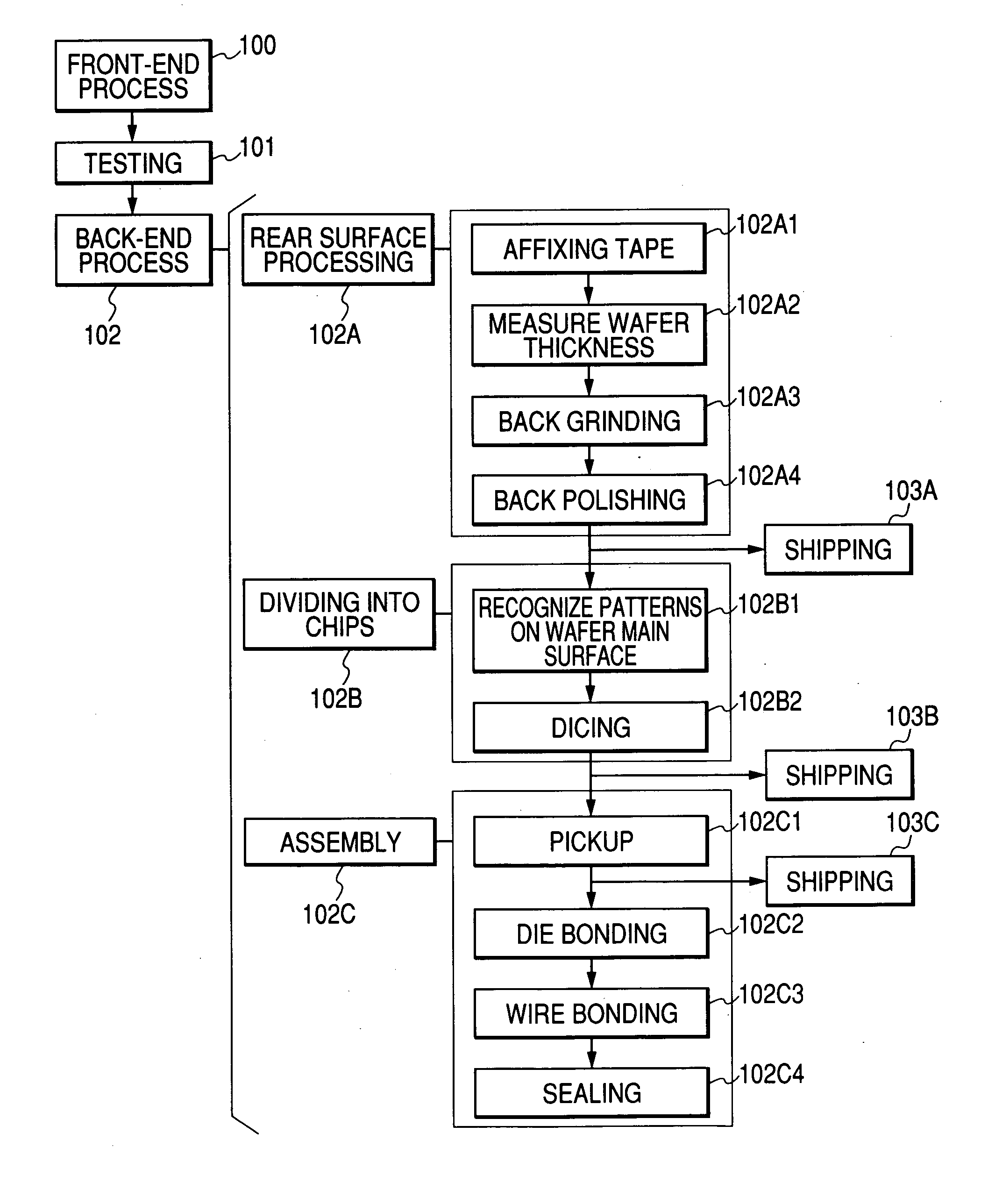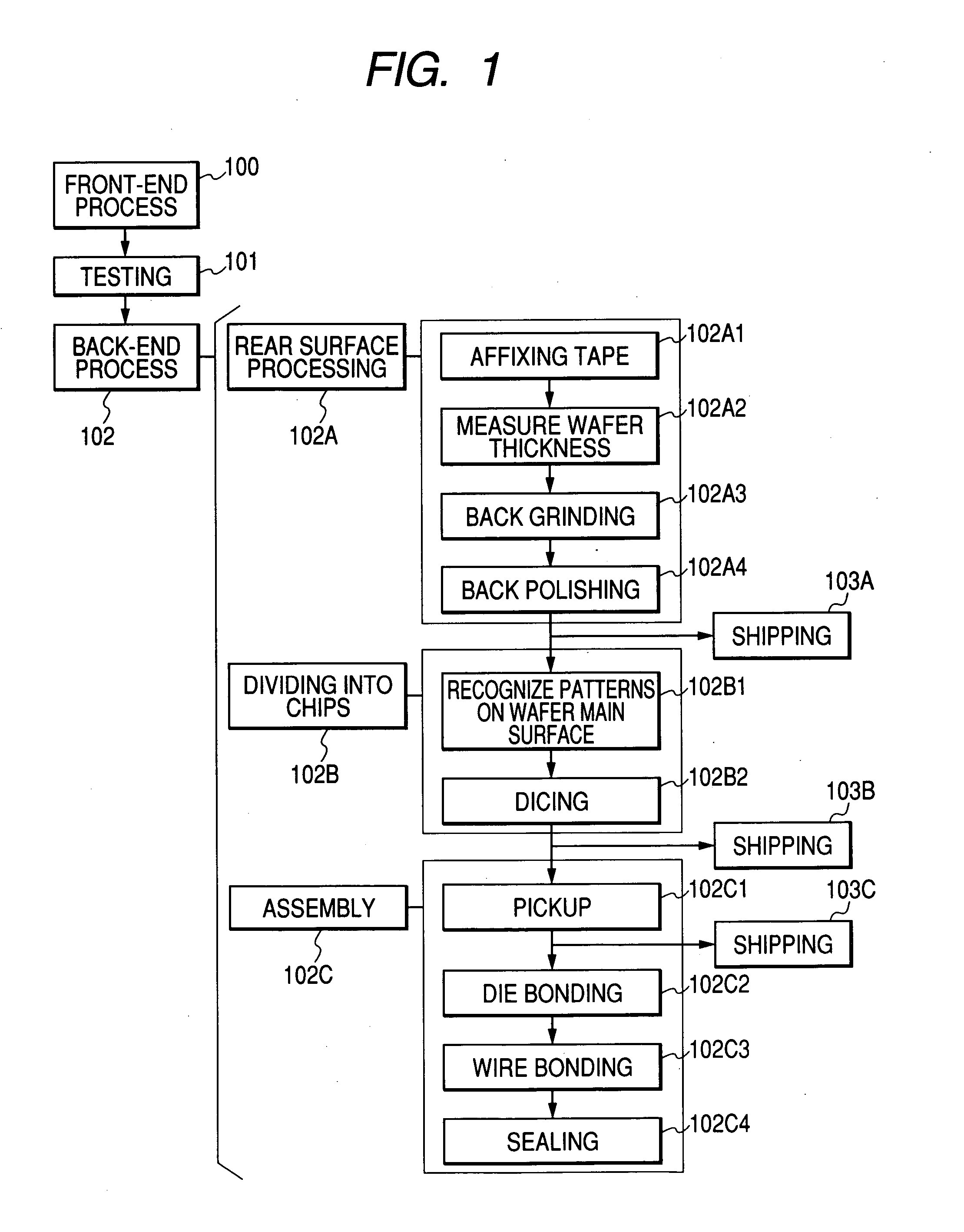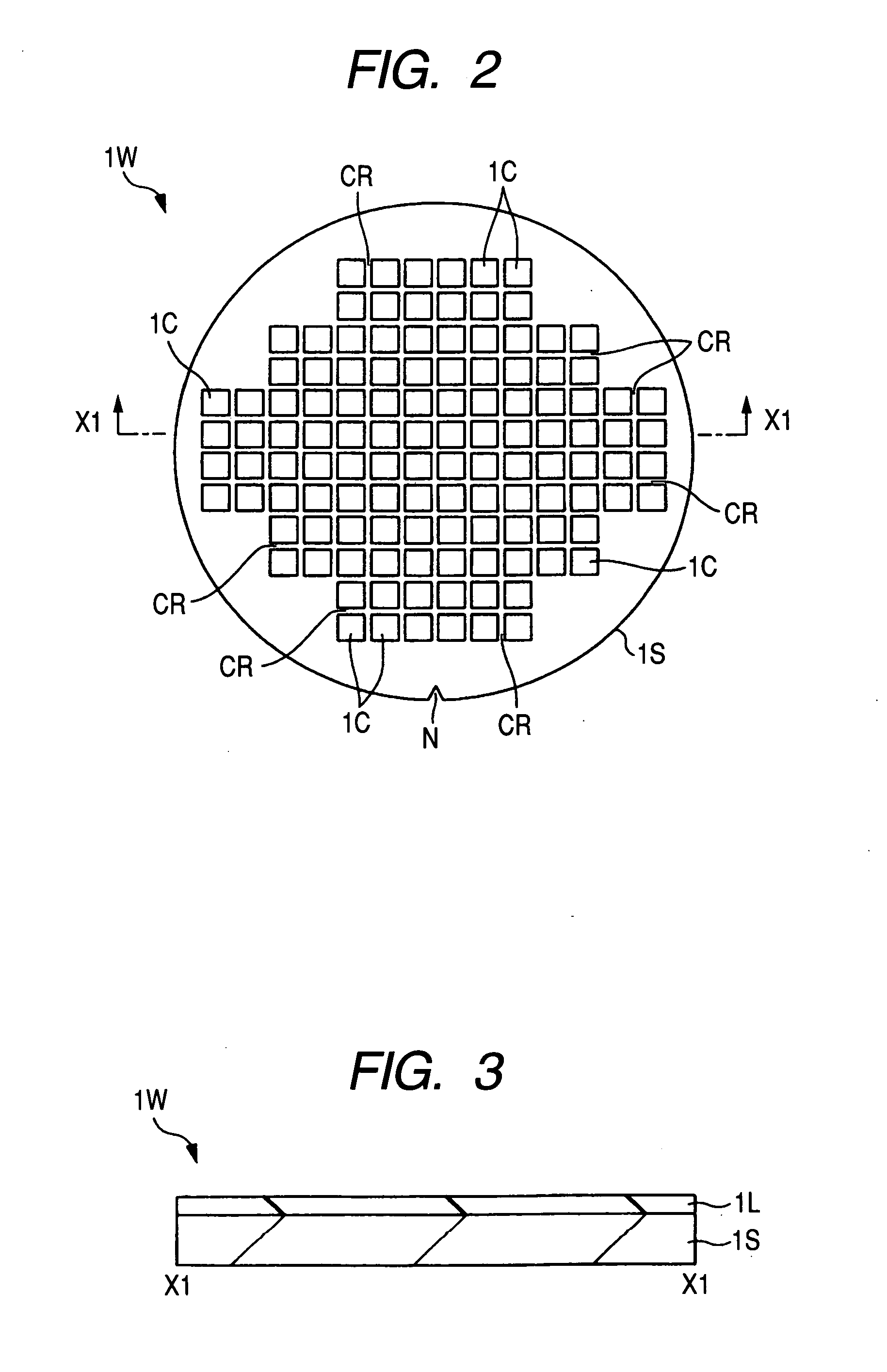Manufacturing method of a semiconductor device
- Summary
- Abstract
- Description
- Claims
- Application Information
AI Technical Summary
Benefits of technology
Problems solved by technology
Method used
Image
Examples
first embodiment
[0068] A semiconductor device manufacturing process according to a first embodiment of the present invention will be described below on the basis of the flow chart of FIG. 1 and with reference to FIGS. 2 to 28.
[0069] First, in a front-end process 100, a semiconductor wafer (hereinafter referred to simply as a “wafer”) having a substantially circular plane shape and a diameter of 300 mm or so, for example, is provided, and plural semiconductor chips (simply “chips” hereinafter) are formed on a main surface of the wafer. The front-end process 100 is also called a wafer process, diffusion process, or wafer fabrication, in which chips (elements and circuits) are formed on the main surface of the wafer and preparations are made so as to permit electric tests to be performed using probes or the like. The front-end process comprises a film forming process, an impurity introducing (diffusion or ion implantation) process, a photolithography process, an etching process, a metallizing process...
second embodiment
[0094] In connection with this second embodiment, a description will be given concerning a conveyance tray for thin chips. FIG. 30 is a sectional view of a principal portion of an ordinary type of conveyance tray 90. With a decrease in thickness of chips 1C, pockets 90a formed in the conveyance tray 90 are also becoming shallower, while taking product protectiveness into account. However, if the pockets 90a are too shallow, when a chip 1C is accommodated into or removed from a pocket 90a, this chip accommodating or removing work affects other chips 1C already received in adjacent pockets 90a, thus giving rise to the problem that the other chips 1C move out of the pockets 90a. FIG. 31 shows an example of this state, in which a chip 1C is about to be received in a pocket 90a. Usually, for accommodating a chip 1C into a pocket 90a formed in the conveyance tray 90, the chip 1C is vacuum-chucked by the collet (an inverted pyramidal collet is illustrated) and, in this state, is conveyed t...
third embodiment
[0108] In connection with this third embodiment, a modification of the wafer thickness measuring step 102A2 shown in FIG. 1 will be described. FIG. 43 illustrates a wafer thickness measuring step according to this third embodiment.
[0109] In this third embodiment, the thickness of the wafer 1W is measured using a thickness gauge 30 beforehand in an off-line manner and the data obtained is transferred to the rear surface processing apparatus. In the same apparatus, the back surface height of the wafer 1W placed on the vacuum chuck stage is detected, and the wafer back surface is subjected to grinding and polishing by a required quantity taking the measured value of the wafer thickness into account. According to this third embodiment, it is possible to eliminate the need for use of an expensive IR camera.
PUM
 Login to View More
Login to View More Abstract
Description
Claims
Application Information
 Login to View More
Login to View More - R&D
- Intellectual Property
- Life Sciences
- Materials
- Tech Scout
- Unparalleled Data Quality
- Higher Quality Content
- 60% Fewer Hallucinations
Browse by: Latest US Patents, China's latest patents, Technical Efficacy Thesaurus, Application Domain, Technology Topic, Popular Technical Reports.
© 2025 PatSnap. All rights reserved.Legal|Privacy policy|Modern Slavery Act Transparency Statement|Sitemap|About US| Contact US: help@patsnap.com



